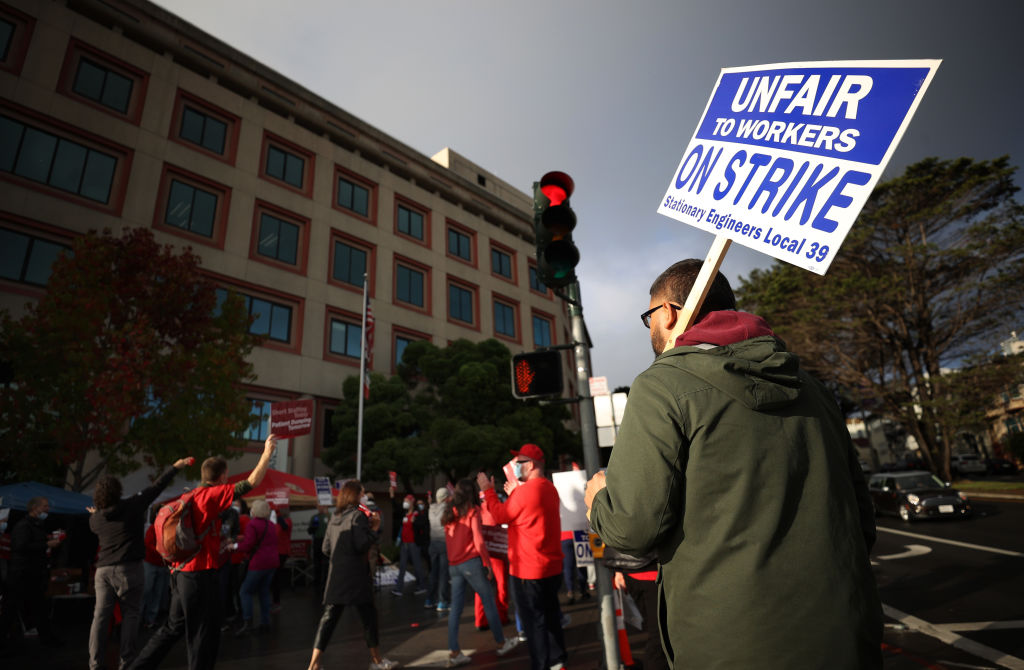Balancing Power between Workers and Employers Requires Sectoral Bargaining
July 13, 2023
By Alí R. Bustamante

“Stronger collective bargaining laws that reinforce the right to strike and bargain collectively without intimidation from employers can sustain the American labor movement beyond the post-pandemic economic recovery.”
Introduction
Full employment policies and strong enforcement of labor laws by federal agencies during the Biden administration have improved labor protections and increased union membership, promoting gains in worker power. Simultaneously, however, the American labor market has continued to experience a growth in employer monopsony that undermines worker power. The administration has attempted to create a balance of power between workers and employers, but additional policies are needed to complement existing efforts. This brief calls for the implementation of sectoral bargaining to enhance worker power so that it can withstand a weakened labor market and counteract anticompetitive corporate practices.
Most workers generally lack the level of wealth or personal savings to be able to leave a job without another one lined up, and the high level of household debt that most families carry makes this even harder. Similarly, modest income assistance programs provided by federal, state, and local governments are not sufficient to allow workers mobility in the labor market. Direct income and in-kind assistance programs like unemployment insurance, food stamps, and Medicaid are extremely limited in both coverage and benefit amounts to households. As a result, workers’ power, which is largely tied to their ability to leave bad jobs and find employment elsewhere, is limited except in moments of extreme labor market tightness.
This challenge is exacerbated by high levels of employer concentration. The Biden administration has made considerable improvements in addressing labor noncompliance by increasing labor law enforcement and through rulemaking and clarifying policy guidelines (Hafiz 2022). Currently, however, there is no mechanism through which the federal government can directly address employer monopsony—labor markets where a single or few employers have the power to disproportionately set the terms of wages and working conditions.
The Biden administration has committed to maintaining full employment and combating unfair labor practices (US Department of the Treasury 2022; White House 2023). Yet the administration’s executive actions alone cannot correct the power imbalance between workers and employers, which has been shaped by statutory exemptions to federal labor laws (Hafiz 2022). States have a long legacy of structuring labor laws to exclude workers by race, gender, occupation, and industry (Fredrickson 2020). State exemptions to federal labor law fuel discriminatory labor practices and exacerbate the employment and wage loss of women, Black, and brown workers during economic downturns (Wilson and Darity Jr. 2022). As a result, recent gains in worker power driven by a hot labor market will likely recede over time unless legislation directly addresses these structural gaps in labor protections and locks in a new balance of power.
The demand-depressing monetary policies of the Federal Reserve and the risk of a national economic recession are already threatening last year’s historic rise in worker power, marked by increased labor leverage, wage growth, and union membership. Stronger collective bargaining laws that reinforce the right to strike and bargain collectively without intimidation from employers can sustain the American labor movement beyond the post-pandemic economic recovery.
This brief discusses the fundamentals of the recent rise in worker power and argues that the hot labor market has not sufficiently curbed employer monopsony power. Achieving a balance between workers and employers requires a powerful labor movement that can push back against unfair labor practices; a sector-wide approach provides the necessary scale to build collective rights for all workers.
Related Resources
Industrial Policy Synergies: Industrial Policy + Labor Policy
read the report Opens in new windowWe Need A Whole-of-Government Approach to Increasing Worker Power
read the fact sheet Opens in new windowBargaining for Stability: Wage Policies under Full Employment
read the brief Opens in new windowReining In Employer Monopsony Must Be a Government Priority
read the blog Opens in new window